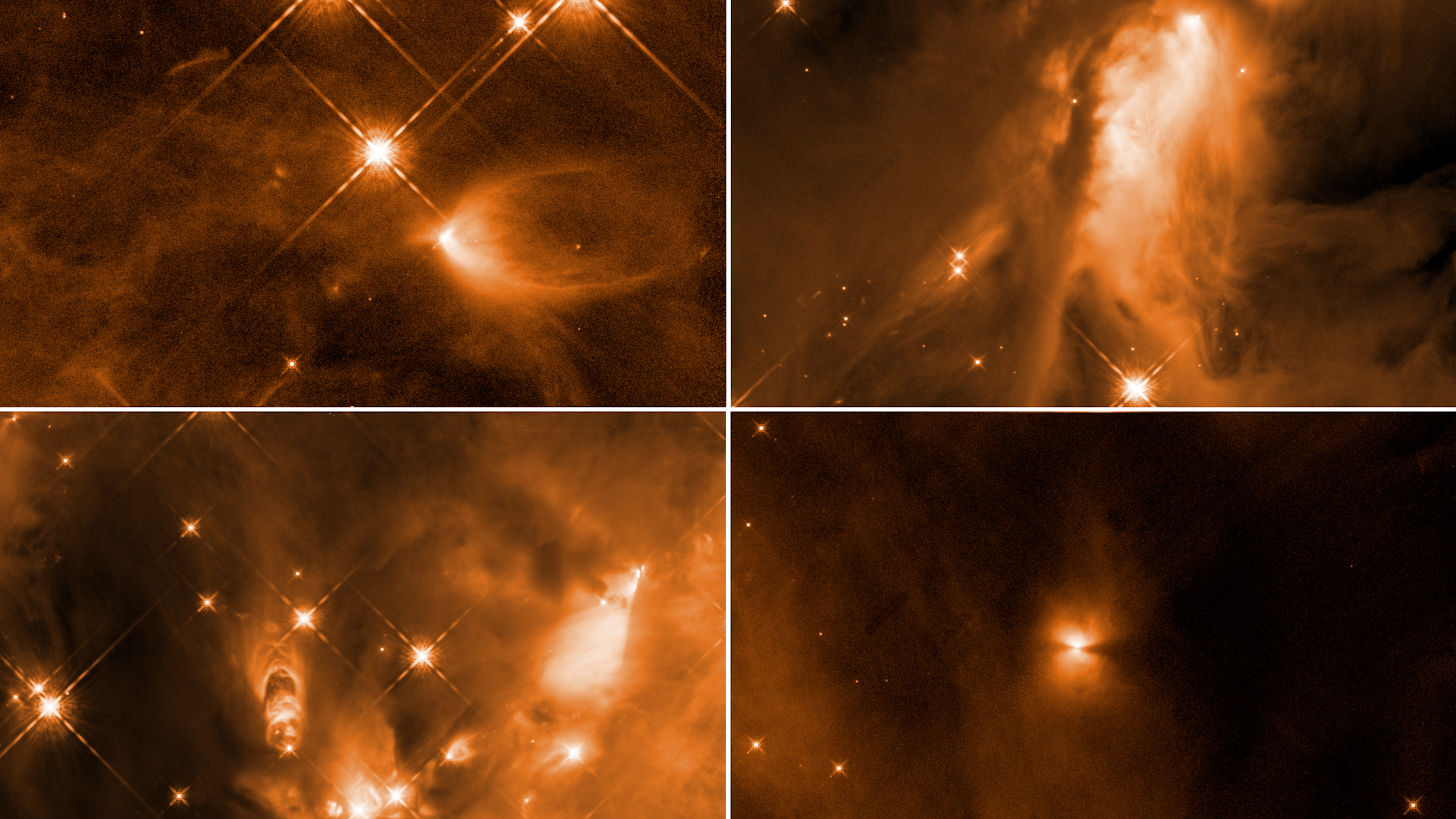The Orion Nebula

NASA’s Hubble Space Telescope captures the formation of newborn stars and planetary systems.
The colorful Orion Nebula lies in our Milky Way galaxy about 1,500 light-years from Earth. A vast expanse of valleys and pillars carved through cosmic swirls of gas and dust, this stellar nursery encompasses a complete range of star formation. Images from NASA’s Hubble Space Telescope reveal thousands of developing stars scattered throughout the region. Deep inside the nebula, which spans about 15 light-years, cold and dense clouds of gas collapse under their own gravity. As each cloud contracts, its core compresses and heats until nuclear fusion ignites a new star. Over hundreds of thousands of years, newborn planetary systems arise from the dust and gas that wrap the stars with shadowy disks. The observations by Hubble provide scientists with a glimpse into how our sun and planets formed five billion years ago. Watch the video for a tour of the nebula.
Zoom through layers of dust and explore young stars at the heart of the Orion Nebula in this visualization.

Intense radiation and winds from bright infant stars sculpt the nebula's dramatic landscape.

Clustered in the center of this image are the nebula’s four biggest stars, collectively called the Trapezium.

Thick clouds of gas and dust are seen next to a single massive star (center) in this image taken by Hubble.
Credits
Please give credit for this item to:
NASA's Goddard Space Flight Center
Video and images courtesy of NASA/ESA/STScI/AURA/The Hubble Heritage Team
-
Scientist
- Frank Summers (STScI)
-
Writer
- Lindzi Wessel (USRA)
Release date
This page was originally published on Thursday, February 11, 2016.
This page was last updated on Wednesday, May 3, 2023 at 1:48 PM EDT.
